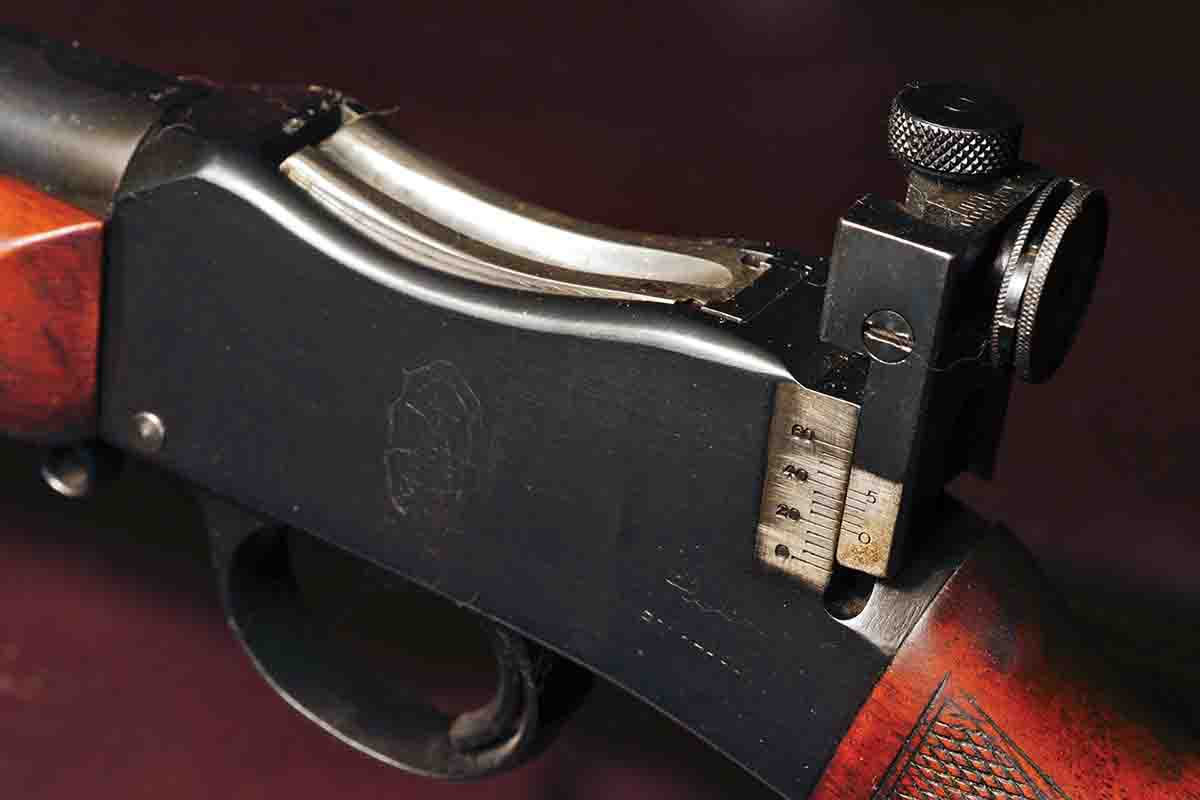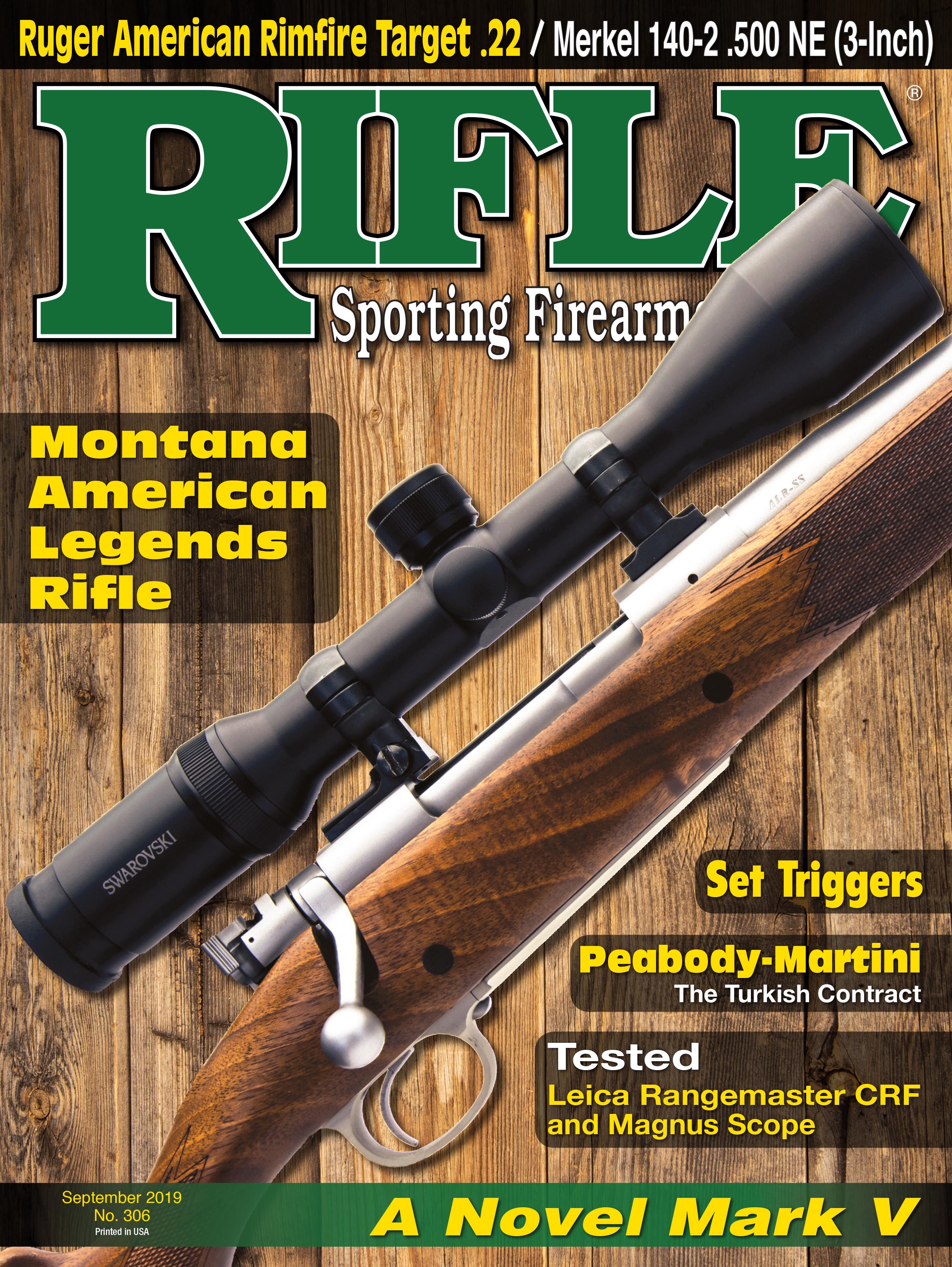Peabody-Martini
Peabody, Martini and the Turkish Contract
feature By: Terry Wieland | September, 19

Henry Peabody invented the rifle action that went on to be the most widely used, longest-lived, and in some ways the best of all the great American single shots, known to all the world as the Martini. Since 1774, Americans have been blaming the British for every injustice, but in this case, well, they have a case. If the British Army had not adopted the Peabody- Martini rifle in 1872 and had not insisted on Henry rifling, and then shortened Peabody-Martini-Henry to simply Martini-Henry, it’s likely Henry Peabody’s reputation would be intact – such is life.
To start at the beginning, in 1862, in the midst of the American Civil War, Henry Peabody of Massachusetts patented a breech-loading rifle with a “tipping” block and external hammer. The block was hinged at the rear and tipped down at the front, providing both a ramp for easy loading and a strong and simple mechanism to work the extractor. It was operated by an underlever that doubled as a trigger guard.

This was at the very beginning of the metallic-cartridge era, but Peabody had struck upon a principle that accommodated all the early problems of breechloading, yet was readily adaptable to everything that came later. It was strong, simple, reliable and eminently adaptable to mass production. Almost as an afterthought, Peabody designed a hammerless variation but did not bother to patent it in Europe.
Peabody sold his patent to the Providence Tool Company of Rhode Island that was run by an unsung master industrialist named John Anthony. For the next few years, Anthony kept busy vying for military contracts both at home and abroad.
With the Civil War at an end, the pressure on Washington to adopt a military breechloader eased. While testing dragged on, Anthony sold his first lot of 3,000 Peabody rifles to the Canadian government, then more to the state of Connecticut. In every trial, the Peabody scored well above the competition in strength, reliability, speed of fire and accuracy, but for reasons never fully explained, the federal officers involved in choosing a breechloader for the American army seemed prejudiced against the Peabody. The key competition was from Remington, an old and established firm. We can draw our own conclusions.


The Providence Tool Co. saw the advantages of Martini’s alteration and simply adopted it instead of promoting Henry Peabody’s own hammerless design. It also used the Henry rifling pattern. Economically, this made sense, since to do otherwise would have been an uphill battle. Having the Martini-Henry in use in all parts of the British Empire provided a strong sales pitch, and the company also sold military rifles to Romania, Spain and Switzerland, among others.
In 1872, the government of Turkey issued tenders for a new military rifle to replace its muzzleloaders. Having decided on the British-style Martini-Henry, it came down to a choice between an English company in Birmingham and Providence Tool. The Americans landed the contract and began what was to turn into one of the great – if little known – industrial triumphs of the nineteenth century.
The Turkish contract was, at the time, the largest single order for military rifles received by any company in history. It eventually grew to 600,000 rifles, stretched over a period of six years, required a massive and rapid expansion of the Providence Tool Company’s factories at a cost of $2 million and involved the participation of a 30-man Turkish technical military team to monitor production and oversee quality control. The U.S. Army provided a team of liaison officers. In many ways, it foreshadowed today’s methods of procurement for military equipment, from rifles to tanks to jet fighters.

It also turned out to be a triumph for American mass production, a field in which the U.S. led the world. The overall quality of those 600,000 rifles was superb, with adherence to tolerances and quality standards that a decade before were unheard of. Providence Tool Co. expanded from two plants in the city of Providence to four. The disadvantages of such dispersed production facilities were overcome by careful planning and scheduling. By the time the contract was completed, the company was capable of producing 1,000 finished rifles per day.
The story of the Turkish contract is told in detail in a book published in 1882, written by industrial journalist Charles Norton and reproduced in part in the third volume of James J. Grant’s series on single-shot rifles, Boys’ Single-Shot Rifles (1967).

One reason for the urgency of the contract was a threatened war between Turkey (Ottoman Empire) and Russia, which duly broke out in 1877. The Turks were armed with the newly arrived Providence Martinis while the Russians used American-made Berdan rifles. Both combatant armies had foreign military observers and war correspondents attached, so there was an unprecedented opportunity to compare the performance of the two rifles. Everyone noted the devastating range, accuracy and penetration of the Martinis, which completely out-classed the Russian Berdans.
A major objective of Providence Tool was complete interchangeability of parts, combined with tight tolerances. In that era, one or the other could be had, but rarely both. Norton tells of a test in which one of the American officers, helping to supervise production and liaise with the Turkish delegation, took 50 finished rifles, completely dismantled them, put all the parts into piles and then began assembling rifles at random with no thought to matching original parts.
Forty-eight rifles were assembled with no problem; the two that presented difficulties were examined by a supervisor, who found that in one case some dirt had found its way into the action, while in the other a soldier had inserted a part backward. With these problems corrected, they once again had 50 complete and functional rifles.

Every rifle was fired at least six times before it left the factory – for a total of some 3,300,000 rounds. There was the odd round of defective ammunition – not unusual for that era – but reportedly not a single misfire due to a malfunction of the rifle itself.
For Providence Tool Company, the Turkish contract was a tour de force in mass production that foreshadowed American arms production prowess from 1914 to 1917, and again from 1939 onward.
The Turkish contract did have unforeseen consequences, however. First, concentrating on military production as they were, Providence Tool Co. cut back drastically on civilian rifles. Its famous “What Cheer” target rifles were made in very small numbers. This put the company at a disadvantage in establishing a solid reputation compared with the Sharps, Remington rolling block and other great single shots of the era. Today, “What Cheer” Martinis are very scarce compared with the others. Also, when the Turkish contract ended, the world’s militaries had moved on from single shots and were now looking for repeating rifles.

If the Peabody-Martini found itself orphaned in its own land, its fortunes abroad were the polar opposite. The largest single user was the British Empire, of course. The Martini-Henry proved eminently adaptable to the .303 British when that cartridge was adopted in 1888, and thousands of rifles were rebarreled. The civilian gun trade used a miniature Martini action to make rook rifles, cadet training rifles and match .22s. Francotte in Belgium designed a modification that allowed the action to be easily dismantled without tools, and this came into common use.
Today, one sees such rifles with names like Westley Richards and Holland & Holland engraved on the side. According to James Grant, the miniature Martini reached its zenith in the deluxe W.W. Greener rook rifle.
In Switzerland, the Martini action became a standard for rifles of all kinds and was also scaled down almost to “micro” size and used in target pistols. Hammerli was making free pistols on Martini actions until late in the twentieth century, and they are marvels of workmanship and accuracy.
It was in Germany and Austria, however, that the Peabody-Martini really showed what it was capable of. The sport of Schützen shooting had been a mainstay of German cultural life since before the invention of firearms. Records date it back more than 800 years, beginning with clubs to promote proficiency with bows and crossbows.
Long-range target rifles became an art form for the Teutonic gunmaker. There were so many makers and so many varieties they are impossible to list. Some were falling or rocking blocks of different designs, but many were based on the Peabody-Martini action. Exactly how many variations of the Martini existed is impossible to say, but it was dozens at least. In Germany, wrote James Grant, the Martini “reached its very highest development.”
Among the different approaches were a design with an internal hammer rather than a spring-powered striker. One of the most well-known derivatives is the Stahl action, which uses a spring shaped like the omega symbol (Ω). Fitted into the breechblock, this spring both powers the striker and withdraws it from the primer.
The Germans developed a method of easy removal of the breechblock similar to Francotte’s. A pin with a large, knurled head and a detent holds the breechblock in place. It is easily removed with fingers alone, allowing the breechblock to be removed for cleaning. Double-set triggers were standard on all Schützen rifles, and these were located on a removable plate that formed the entire lower section of the action. Turning a lever 90 degrees releases the plate, which is then lifted out. This is an early use of modular construction.
Combining a detachable trigger plate with a removable breechblock allows the entire action to be dismantled without tools. In some cases, the makers included an aperture in the rear of the frame to allow cleaning from the breech rather than the muzzle.
The making of Schützen rifles in Germany effectively ended in 1935, but the Martini action stayed in use to the end. In England, miniature Martinis were made until well into the 1970s, with the last variation, the International action, used for Olympic-style smallbore shooting. And of course, they are made to this day in Switzerland.
During the flurry of reproductions of classic American single shots that occurred from the 1980s to now, the Peabody-Martini was sadly neglected. One company made an abortive attempt but is not now producing any rifles; another, DK Precision, announced at this year’s Shooting, Hunting and Outdoor Trade (SHOT) Show that it would start making Martinis. We shall see.
It’s unfortunate that no one seems to have considered making the original hammer Peabody. It was perhaps the most graceful single shot of that era, undoubtedly strong and accurate, and can do anything any of the others can do. To my eye, being much simpler, it could also be considerably cheaper without sacrificing quality. Perhaps one day a whiz-kid industrialist will fall under the spell of single shots and right that wrong. For Henry O. Peabody, it would be long overdue.


